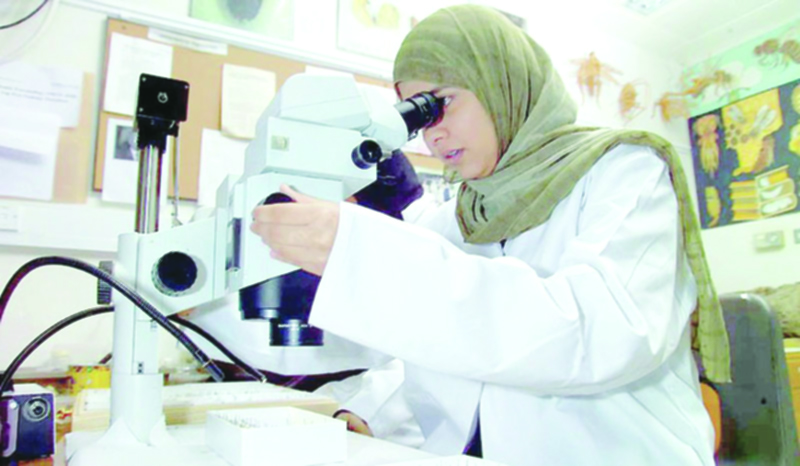
Muscat: Omani women accounted for 38.7 per cent of the total number of women in the Sultanate in civil service units and the private sector at the end of 2015, indicate official statistics.
The number of women in the Sultanate in civil service units and the private sector, as of the end of December 2015 was pegged at 318,286, including 123,301 Omani women and 194,985 expat women, according to data from the Ministry of Civil Service and the Royal Oman Police (ROP).
The statistics indicated that there are 73,056 Omani women in civil service units, working in educational services and their assisting jobs, whereas Omani women are working in medicine, public health and their assisting jobs, representing 46.9 per cent out of the total number of Omani employees that stood at 155,761.
The number of Omani women working in the private sector amounted to 50,245, representing 24 per cent of the total number of 209,544 Omanis in the private sector as of the end of last December.
According to data from the Ministry of Civil Service until the end of 2015, the number of Omani women on a standardised grading scale was said to be 58,569, whereas the number of Omani women on the scale of medical jobs, nursing jobs, pharmacists, medical engineers, health assistants, nurses, assisting health jobs, assistant pharmacists, health information management, teaching staff in the health institutes affiliated to government medical institutions stood at 14,487.
The statistics also showed that Omani women on financial grades, from 8th to 10th grade on the standardised grade table, which does not include those employees who are not on the medical regulation, accounted for 72.7 per cent, with 42,553 women from the total number of Omanis on the table.
They also made up for 12.8 per cent of financial grades from the special grade to the 7th grade, and 14.5 per cent on financial grades, from 11th to 18th grade on the standardised table, which does not include those employees, who are not on medical regulation.
The number of expat women in civil service units was 12,557, of whom 41 women were citizens of Gulf Cooperation Council countries, 3,589 were Egyptians, 793 were Sudanese, 218 were Jordanians, 766 were Tunisians, 58 were Iraqis, 24 women were from other Arab countries, 4,501 were Indian nationals, 231 were Pakistanis, 60 were Sri Lankans, 108 were Bangladeshi, 2,120 were Filipino, six were British, and 42 belonged to other nationalities.
The annual report of the Ministry of Civil Service said 36,873 Omani women had training opportunities, both inside and outside the Sultanate during 2015, constituting 54.4 per cent of the total number of trained personnel, of whom 245 women enrolled in training courses outside the Sultanate.
The statistics published by the National Centre for Statistics and Information (NCSI) and attributed to the ROP explained that the Governorate of Muscat accounted for the largest proportion of Omani working women, with 24,938 constituting 49.4 per cent of those working in the Governorate of Muscat as of the end of 2015. The Governorate of North Al Batinah came second with 13.8 per cent and 6,937 women, 3,839 women were from the Governorate of South Al Batinah and 3,495 women from the Governorate of A’Dakhiliya. The Governorates of Musandam and Al Wusta had the lowest number of working women, at 179 and 132, respectively.
The data showed that 45.8 per cent of the total Omani insured working women in the private sector and those earning a monthly salary of OMR325 to 400 reached 23,025, whereas women representing 7.13 per cent earned a salary of more than OMR400 to 500 per month, 7.9 per cent earned more than OMR500 to 600 per month, 7.9 per cent earn a monthly salary of more than OMR1,000 to 2,000 per month and 3,966 women, or 1.7 per cent of them earn a monthly salary of more than OMR2,000 per month, which was 855 women at the end of 2015.